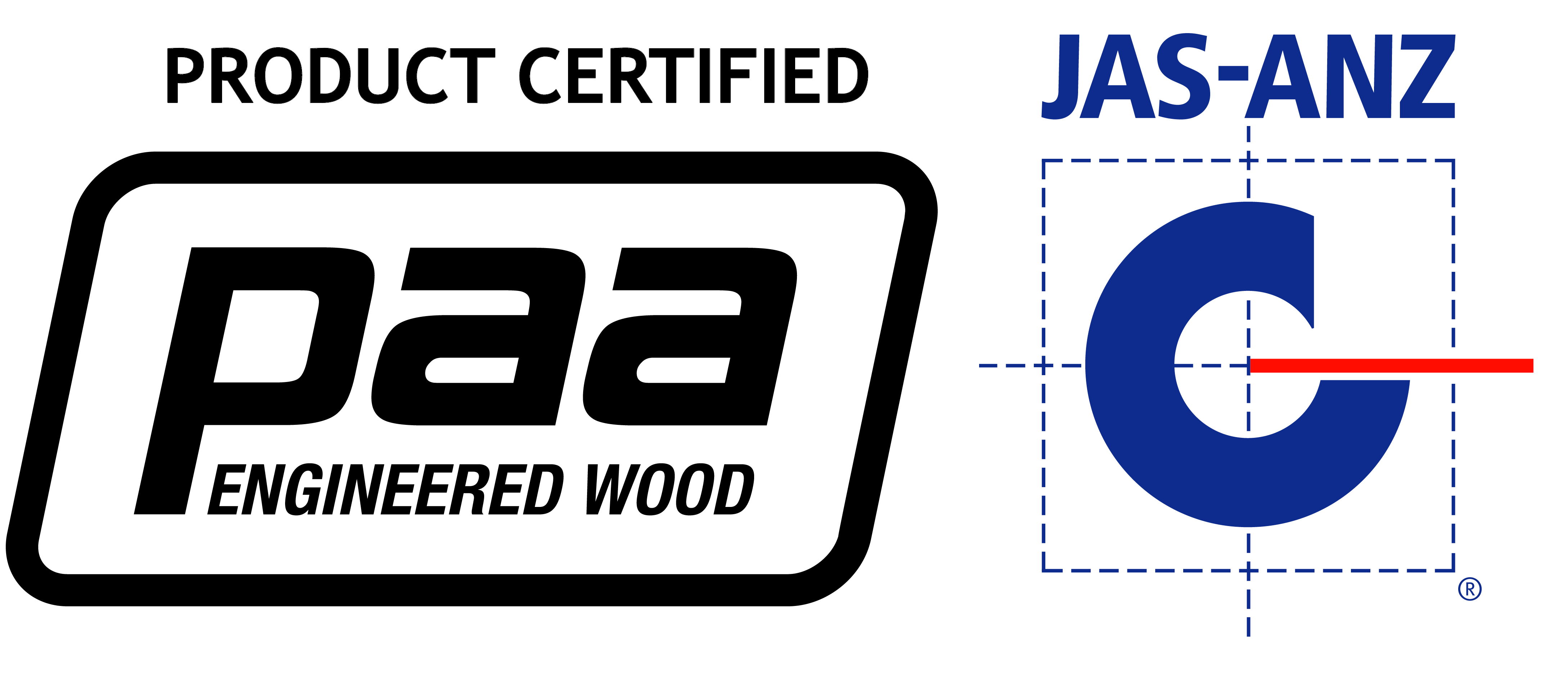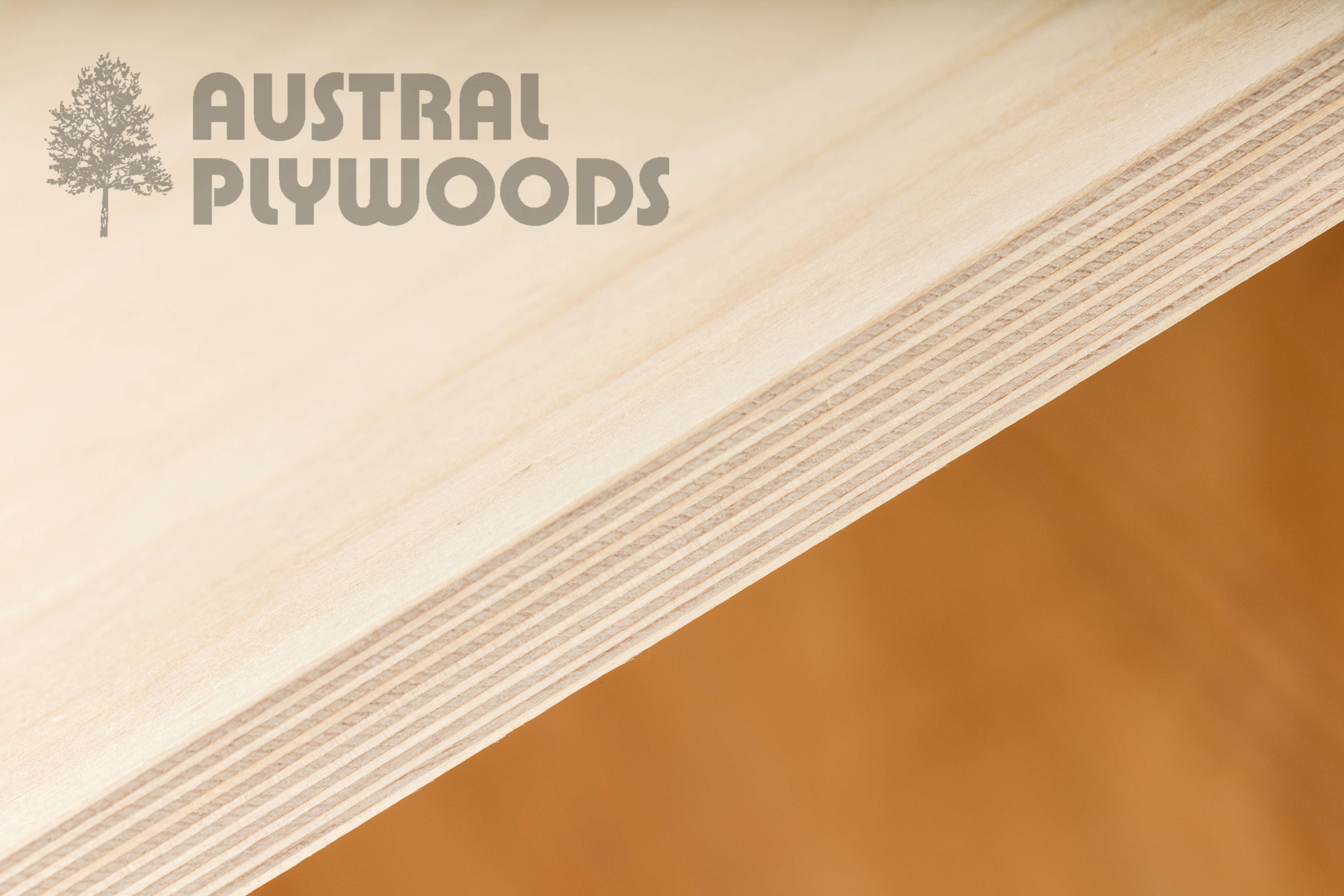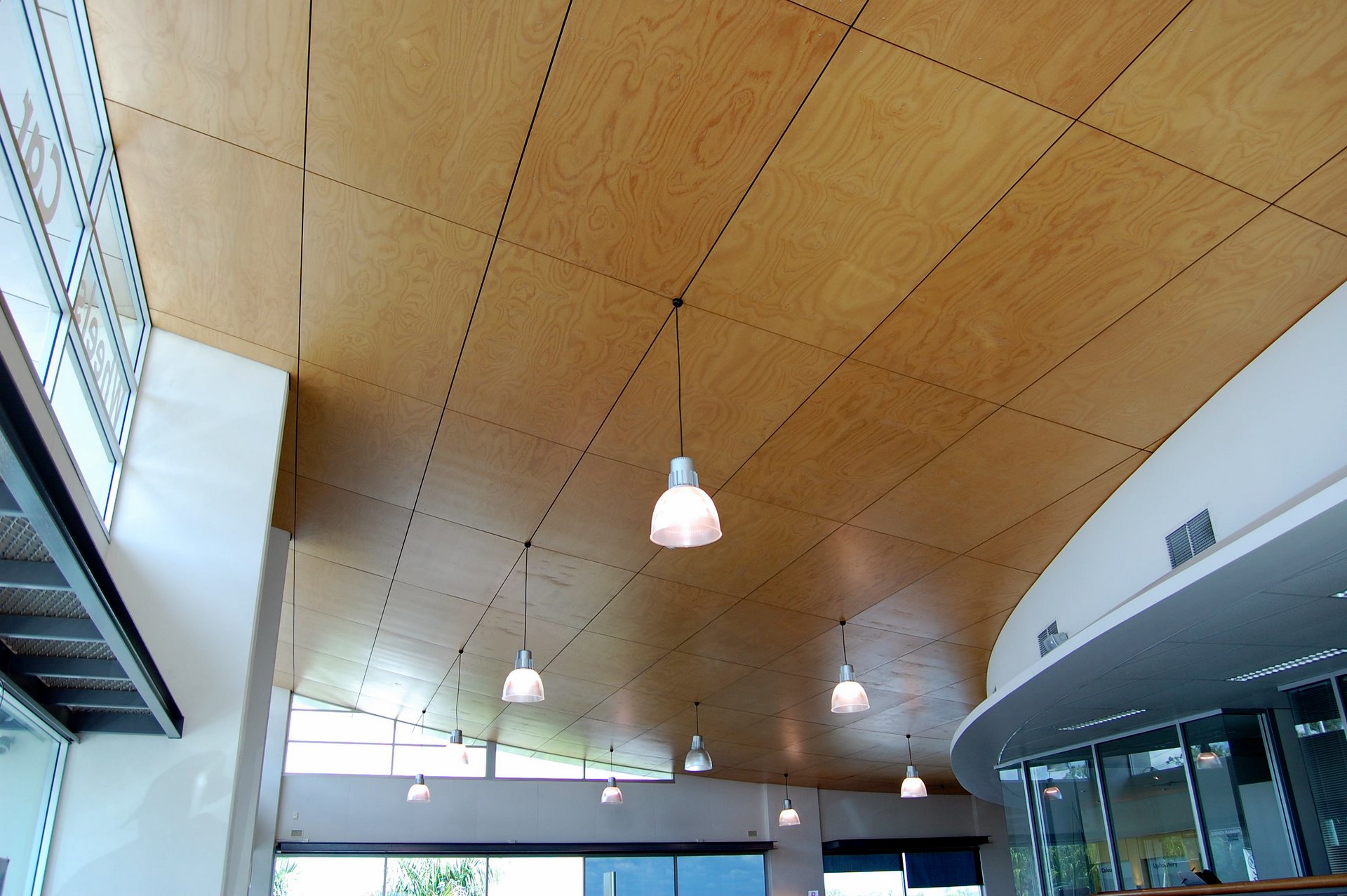Engineered wood products have defined and standardised structural properties. Their strength and stiffness characteristics are therefore totally predictable. The EWPAA/JAS-ANZ product certification brand means that they are also highly reliable.
The engineered wood products that are product certified by the EWPAA are:
- Structural plywood
- Concrete formwork plywood
- Marine plywood
- Laminated Veneer Lumber (LVL)
- LVL/plywood I-Beams.
Interior and exterior plywood are also product certified by the EWPAA, but they are not engineered wood products. They are non-structural panel products.
Veneer Arrangement
Each of the engineered wood products that are product certified by the EWPAA are manufactured with specific veneer arrangements to optimise their in-service performance in their intended application.
The manufacturing aspects which differentiate each of the engineered wood products and result in different in-service performance characteristics are:
- Density and species of timber used
- Quality of veneer used
- Thickness and arrangement of individual veneers
- Bond type between veneers.
Density and species of timber
The density of plywood and LVL is approximately equivalent to the density of the timber species used to manufacture the product. The density of pine plywood is in the range 500 - 650 kg/m3. Eucalypt hardwood plywood density can exceed 900 kg/m3 depending on the timber species used.
Generally, higher density species have higher engineering properties. Species of timber may also be chosen to provide a suitable substrate to achieve a high quality finish.
Veneer Quality
The veneer grade used in plywood or LVL will affect its structural performance. The use of all A or B grade veneers in structural plywood will increase its engineering properties by one stress grade. However, usually only higher quality face veneer grades are specified for aesthetic reasons, rather than structural performance.
Marine plywood has high grade face and core veneers to not only allow a high quality finish, but to also increase impact resistance and minimise water penetration through any knots in core veneers. Useful qualities in boat building material! (Note: marine plywood is not waterproof - the final external surface finish provides the waterproof coat).
Veneer arrangement and veneer thickness
The veneer arrangement and thickness of individual veneers within plywood and LVL is critical in determining dimensional stability and the structural performance characteristics of strength and stiffness.
Dimensional stability
Cross lamination of veneer layers restricts the veneer movement across the grain due to moisture and temperature changes. Thus the dimensional stability under moisture content and temperature changes of plywood and LVL products containing cross-laminated veneer will be superior to other wood products. The dimensional stability of LVL containing no cross bands will be similar to the parent timber from which it was manufactured.
Data for calculating the hygroscopic movement of plywood under changes in moisture content is given in the EWPAA design manual "Structural Plywood for Commercial and Industrial Flooring".
Strength and stiffness
Generally in plywood panels, the outer most veneers have the greatest influence on strength and stiffness. Increasing the thickness of the face veneers will increase the strength and stiffness characteristics in the face grain direction. Thin face veneers with thicker underlying cross band veneers will tend to give the plywood more equal strength and stiffness characteristics in both directions.
Structural plywood usually has thicker face veneers than those used in concrete formwork plywood or marine plywood. Structural plywood transfers load in all directions, however because of the veneer arrangement, most structural plywood has far greater strength and stiffness in the direction of the face grain. It is specified that structural plywood be supported such that the face grain is parallel to the span. Supporting plywood with the face grain direction at right angles to the span is not recommended. (Note: the face grain direction of plywood is normally parallel to the length of the plywood sheet).
Concrete formwork plywood and marine plywood usually have thinner face veneers over thicker underlying cross veneers and are designed to have similar strength and stiffness properties in both directions; characteristics that are important in concrete formwork and boats. Actual structural properties for concrete formwork plywood both along and across the grain are specified in the EWPAA design manual "Plywood in Concrete Formwork".
LVL (and I beams) usually have unidirectional veneers. That is, all veneers are parallel to the beam length and there are no cross veneers. This optimises their performance as a beam, spanning in one direction.
NOTE: Generally, different plywood types are not directly substitutable for the same structural application. For example, equivalent stress grade and thickness structural and marine plywoods will not perform the same in a flooring application. The structural plywood will usually be stiffer and stronger when supported with the face grain direction parallel to the span, than will the marine plywood.
Bond Type
The EWPAA certified engineered wood products are bonded with the Type A phenolic adhesive, other than some concrete formwork plywoods which use lower durability bonds.
NOTE: The bond durability is a different issue to the veneer durability. Veneers may require preservative treatment depending on the intended application of the plywood.
Resistance to Chemical Agents
Plywood is relatively unaffected by moderately acidic and alkaline conditions between pH2 and pH10 within normal atmospheric temperature ranges.
Extract from the EWPAA Publication "Facts About Plywood", courtesy of the EWPAA.






